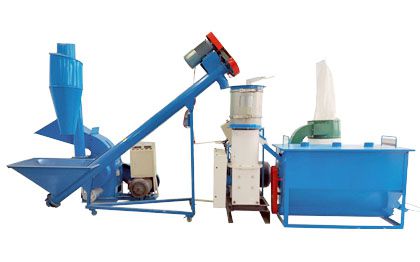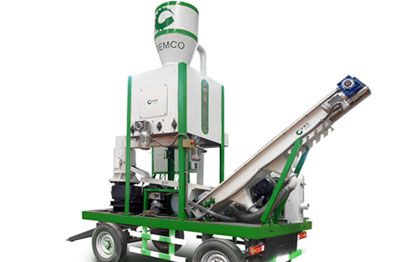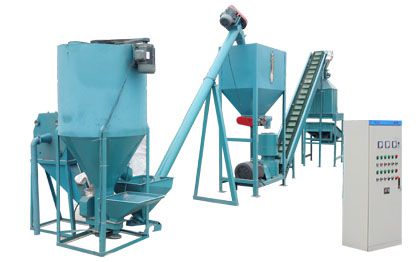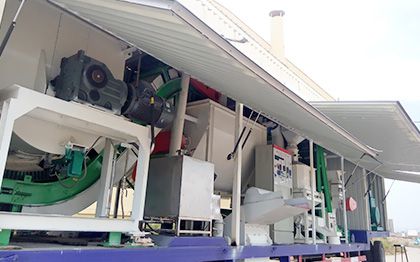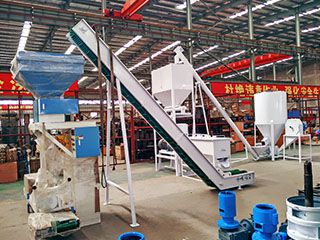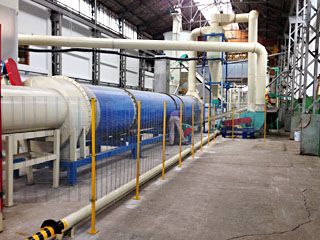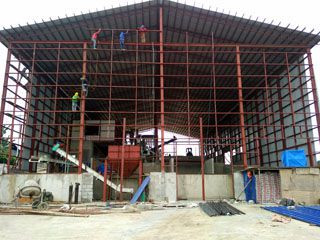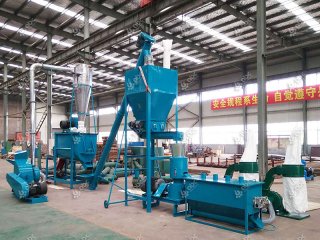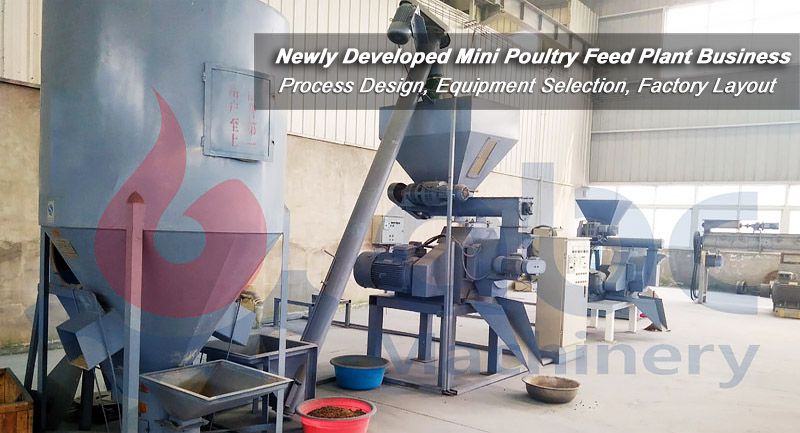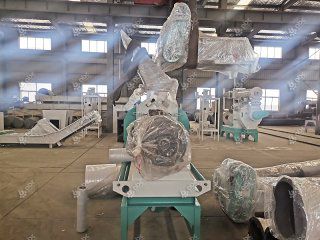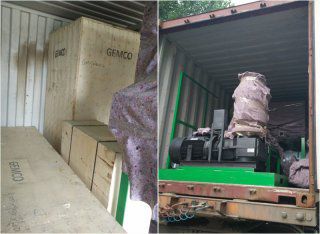
Compressed Feed Pellet Plant (left), Extruded Fish Food Pellet Machine Set
Due to the high production yield and low cost, fish feed manufacturing machinery is becoming more and more popular in aquaculture feed processing industry. Fish feed pellets can be divided into hard feed pellets, soft feed pellets and extruded feed. The diameter of feed pellets range from 0.5mm to 10mm. And the selection of feed size depends on what kind of aquatic animal to feed. So before searching for a fish feed manufacturing machine, you must decide what size of feed pellets you need.
Choose the Most Appropriate Size and Type of Fish Feed Pellets

Feeding big fish with small pellets is not economical. Meanwhile, feeding the young fish or shrimp with big pellets will cause swallow problem. For example, when feeding adult grass carp, 8mm feed pellets are suggested.
In addition to pellet size, we should also pay attention to the feed pellet type. There are hard feed pellets, soft feed pellets and extruded feed pellets. The first two belong to sinking fish feed, while third one belongs to floating fish feed. Once in water, the hard and soft feed pellets sinks in very short time, which is suitable for feeding the fish living in the bottom of the pond, while the extruded feed can be made floating or slow sinking.
Choose the wrong size or type of feed not only increase the feed waste, affect the fish health, but also can cause water pollution. Therefore, it is very important to choose the right fish feed manufacturing machine for making the most appropriate size and type of fish feed.
Soft Feed Pellets Vs. Hard Feed Pellets
Soft and hard feed pellets are made by the same type of pellet machine through the same processing method. The difference is that :
Soft Pellets: Steam or water is needed during the pelletizing process. The final pellets contain more water (moisture content 20~30%, density 1g/m3). The pressure required to produce soft feed pellets is small and the mechanical power is also small. Take a 5.5kW pellet machine for example, it can make about 140kg 4mm pellets per hour, enough for 50~100m2 of fishpond.
Hard Pellets: No need of steam and water. The final pellets contains less water (moisture content 17`18%, density 1.3g/m3). The production out of hard pellets is higher than that of soft pellets. When setting up a complete and automatic hard feed pellets production line, cooling and drying equipment is generally needed, while soft pellets production doesn’t need it. Here is a 40ton per hour fish feed mill plant for your reference.
Extruded Feed Pellets
Expanded or extruded feed pellets are produced under high temperature (130~150℃) and high pressure (40 ~ 60 atmospheric pressure), help killing salmonella and escherichia coli and prevent fish diseases. The extruded feed are cooked and starch was gelatinized, making it easy for fish to digest and absorb. Recently, one a complete set of floating fish feed pellet machine was shipped to our American Agent. Some people worry that the high temperature will damage the protein inside the feed. While, we have done the crude protein content test on the extruded compounded fish feed.
The Formula is:
Fish meal 15%, soy flour 20%, barley flour 15%, corn flour 10%, locust tree leaves 4%, bran 35%, and growth hormone 1%.
The crude protein content in the raw material measured before extruding was 25.9% and it was 27.17% after extruding. The actual effect of feed farming also proves that expanding / extruding does not destroy the crude protein in the feed. View the project design and main equipment for complete processing plant for fish feed.
Energy Saving and Consumption Reduction Factors
In the fish feed expansion process, there are many factors affecting the feed density, such as processing technology, feed manufacturing equipment, processing parameters, process control, feed raw materials, formula, etc.
Besides, the Energy saving and consumption reduction is also is also the key point. At present, it mainly studies the low-energy processing technology and the influence of the main process parameters on energy consumption, and establishes the corresponding mathematical model to achieve the door of energy saving and consumption reduction.
" For example, in the production process of Suckling pig, the corn raw material is not fully expanded, but partially expanded. In the later process, expansion and low temperature granulation are adopted to guarantee the reduction of energy consumption per unit product."


